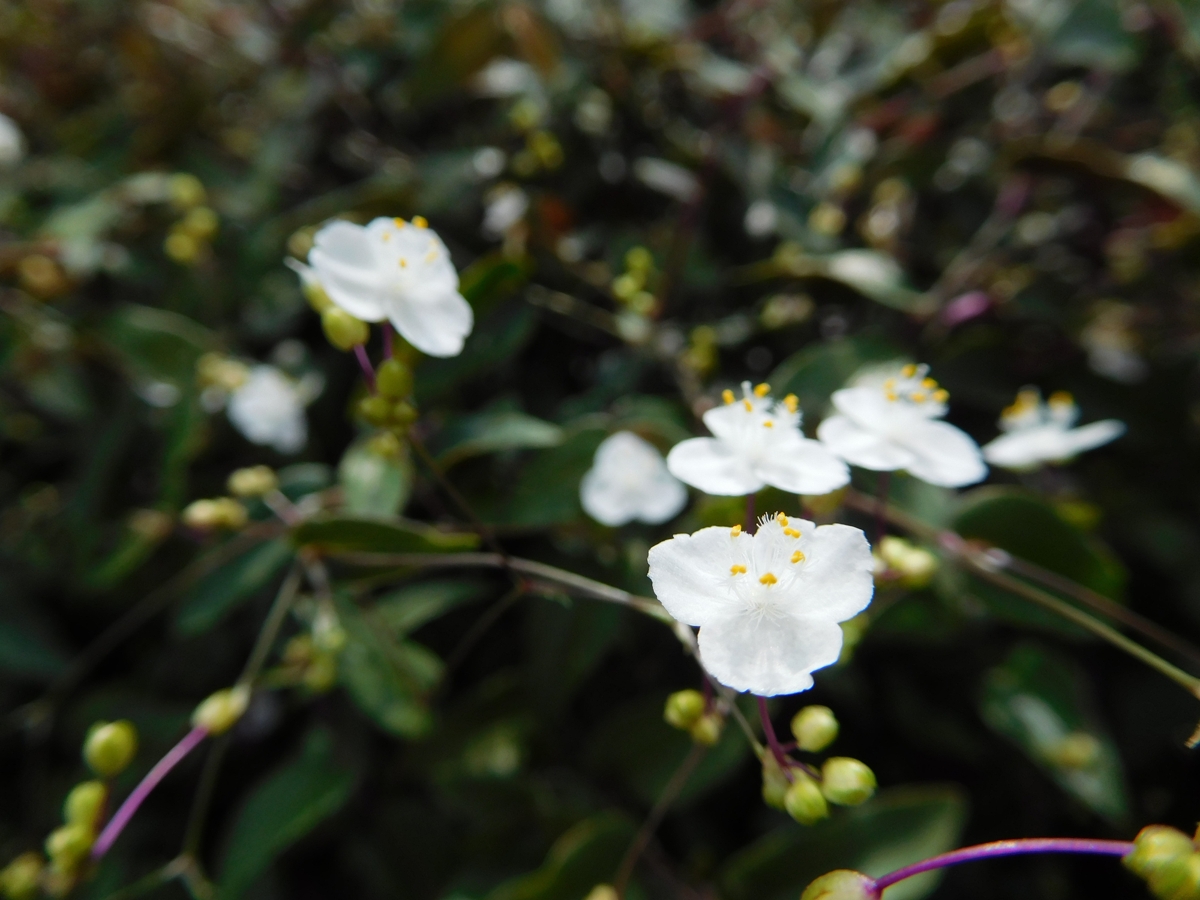The bridal veil plant, also known as Gibasis pellucida, is a beautiful trailing houseplant perfect for hanging baskets With its cascading foliage resembling a bride’s veil studded with tiny white “pearls” for flowers, it’s easy to see where this plant gets its common name. Caring for a bridal veil plant is relatively straightforward, but there are some key things to know to keep your plant healthy and encourage lush growth and prolific blooming
Optimal Growing Conditions
Bridal veil plants hail from the tropical regions of Central and South America They thrive indoors in homes and offices where conditions mimic their native environment Here are the optimal growing conditions to provide your bridal veil plant
-
Light: Bright, indirect light is best. Some morning or late afternoon sun is usually fine, but avoid prolonged direct sun which can scorch leaves.
-
Temperature: Ideal temps are 55-75°F. Avoid drafty areas.
-
Humidity: Average room humidity is fine. These plants don’t require high humidity.
-
Soil: A well-draining potting mix with added organic matter like peat moss or compost.
-
Water: Water when the top inch of soil is dry. Allow soil to dry out somewhat between waterings.
Planting and Repotting
Bridal veil plants are lovely trailing from hanging baskets or cascading over the edges of shelves and tabletops. Choose a container with drainage holes and use a quality potting mix for tropical plants. Repot when rootbound, moving up just one pot size. Take care not to damage the fragile stems when repotting.
Propagation
You can easily propagate new bridal veil plants from stem cuttings. Snip 3-4 inches off a healthy stem, removing the lowest set of leaves. Place the cutting in water until roots form then plant in potting mix. You can also simply stick the cuttings directly into moist potting soil. Keep them warm and humid while rooting.
Watering and Fertilizing
Bridal veil plants prefer drier soil and are prone to root rot if overwatered. Allow the top inch of soil to dry out between waterings. Water thoroughly until it drains from the bottom, then dump out excess water. Reduce watering frequency in winter when plants are semi-dormant.
These plants are light feeders. Applying a balanced liquid fertilizer monthly during spring through fall is sufficient. Avoid over-fertilizing which can cause leaf burn.
Pruning and Training
Pinch back long trailing stems to encourage bushiness and control size. Remove any dead or damaged growth as needed to maintain an attractive appearance. Prune right after flowering to direct energy into new blooms instead of seed production.
Bridal veil plants look lovely trailing from hanging baskets or cascading over edges. Train the stems as needed to achieve the look you desire.
Flowering
With the right care, bridal veil plants can bloom for months, from late winter into fall. The tiny white flowers stud the dangling foliage. Deadhead spent blooms to encourage more flowering. Provide bright, indirect light and prune after flowering to maximize blooms.
Potential Problems
Bridal veil plants are relatively pest and disease resistant. Here are some potential issues to watch for:
- Root rot from overwatering
- Mealybugs, aphids, spider mites
- Leaf spot fungus if humidity is too high
Good airflow, pruning out infected parts, and treating pests with insecticidal soap should resolve most issues.
Toxicity
One important note – bridal veil plants are toxic to pets like cats and dogs. Keep them safely out of reach!
Enjoying the Cascading Beauty
With their trailing stems covered in charming little flowers, bridal veil plants make a graceful addition to any home. Follow these tips on lighting, watering, pruning, and troubleshooting to keep your plant healthy and looking its best. The cascading foliage and delicate blooms will add a touch of tropical flair indoors.
{{ myLocationTodaysHours.open }} – {{ myLocationTodaysHours.close }}
We have nine locations across Northeast Ohio, spanning the Cleveland, Akron-Canton, and Youngstown communities. Search here to find the location most convenient for you.
- Zip Code, Address, or My Location
Bridal Veil Plant 8″ Hanging Basket
Gibasis geniculata is a popular houseplant with long, cascading stems and small white flowers that bloom from spring to fall. This indoor plant does best with slightly moist soil and very little light. Water only when soil feels dry to the touch and then soak thoroughly. Fertilize weekly as directed on packaging. Prune stems back when too long for the space and/or to encourage fuller growth and presentation.
- Medium to Bright Indirect Light
- 12-30″ h x 12″ w
- Container Garden
- Pleasing Foliage
HOW I GROW BRIDAL VEIL PLANT: Filipina life in Australia
FAQ
Do bridal veils like sun or shade?
Should I trim my bridal veil plant?
Why is my bridal veil plant dying?
How often do you water a bridal veil plant?
- A Complete Guide to Caring for Yuki Cherry Blossom Shrub - January 23, 2025
- Identifying Red Hot Poker Seeds: What to Look For When Harvesting Torch Lily Pods - January 23, 2025
- A Complete Guide to Harvesting Evening Primrose Seeds - January 23, 2025

